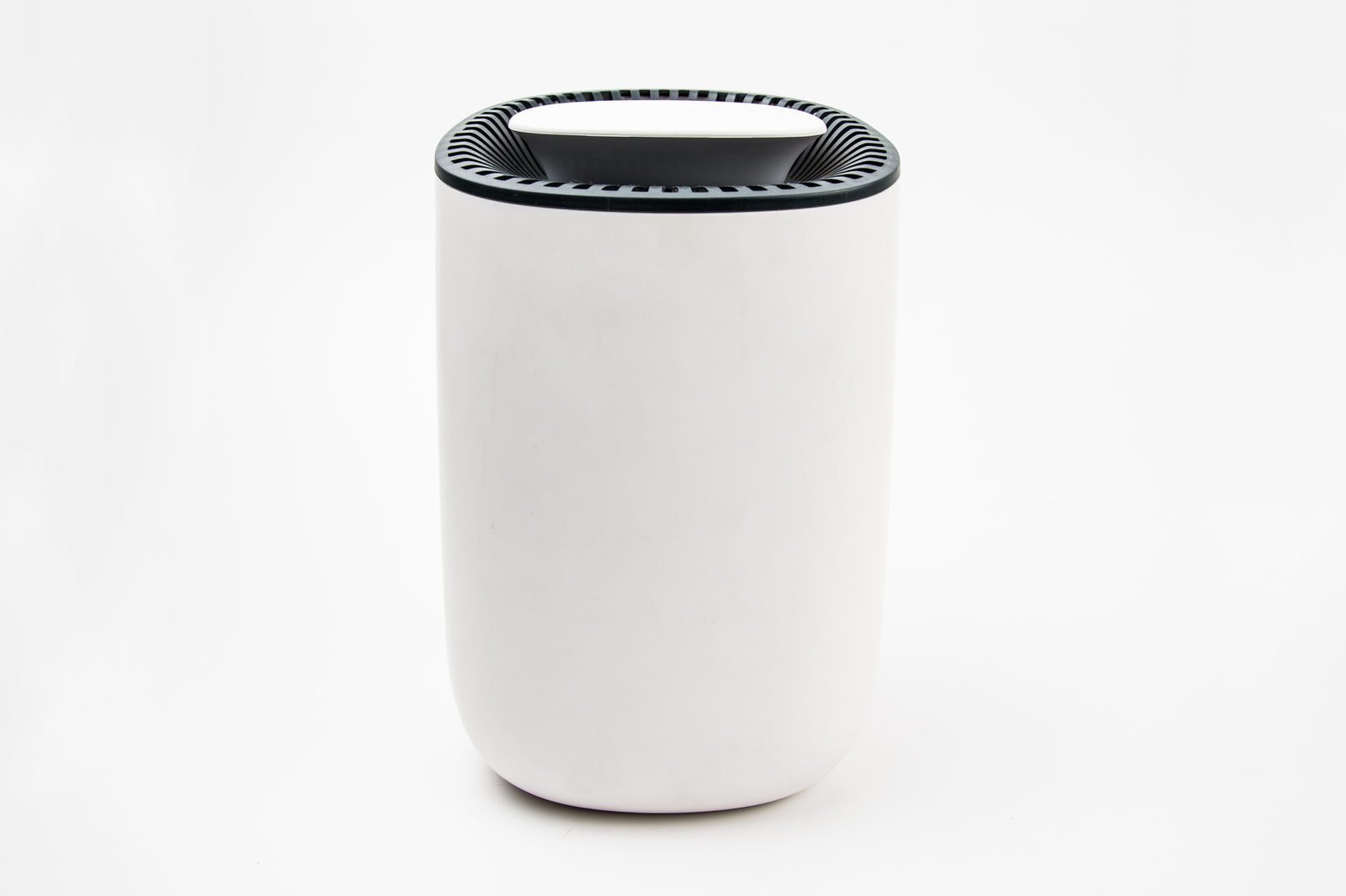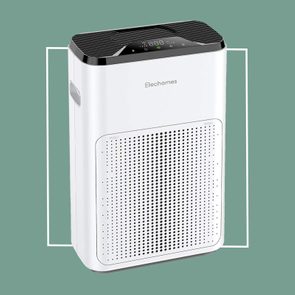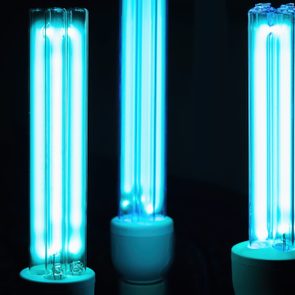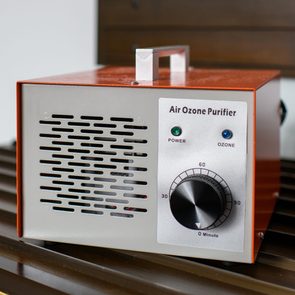Do Plug-In Air Purifiers Work?
Updated: Jun. 10, 2021
Plug-in air purifiers are a good choice to improve indoor air quality and can help certain groups of people, like those with asthma and allergies. Here's what you need to know before you buy.
How plug-in air purifiers may help
There’s a reason we call the air outside “fresh.” Inside our homes, allergens like dust and pollen as well as bacteria, viruses, and pollution are swirling in the air. According to the Environmental Protection Agency (EPA), poor indoor air quality can cause immediate effects, such as irritation of the eyes, nose, and throat, headaches, dizziness, and fatigue. Long-term effects of indoor air pollution include respiratory diseases, heart disease, and cancer.
People often turn to plug-in air purifiers to clean their air, but do they work—and are they necessary? Here’s what you need to know.
What’s in the air in my home?
The quality of the air in your home depends on a number of things. If you live near a freeway or near industrial plants, for example, there’s a good chance you’ve got a form of pollution in your house that’s known as PM2.5, says Emily Jones, a researcher in the Healthy Buildings program at Harvard University’s T.H. Chan School of Public Health.
PM2.5
According to the EPA, PM2.5 refers to tiny inhalable particles, often from power plants, industries, and vehicles. The PM part stands for “particulate matter,” and the 2.5 refers to the particle’s size—2.5 micrometers, which is about 100 times thinner than a human hair. “PM2.5 has been associated with a whole host of bad health outcomes, like premature mortality, cardiovascular disease, and neurodegenerative diseases,” says Jones. “So it’s not something that you want to be breathing, especially high concentrations of.”
(Learn more about the effects of air pollution.)
Other particulates
Things you do inside your home, like cooking, smoking, and burning candles, also add particles to the air, says Jones.
A 2017 study published in PLOS ONE found that secondhand smoke from cigarettes impacted indoor air quality the most; other major pollutants included the fumes from cleaning products and the emissions from burning candles or incense, frying food, and smoking marijuana. Biological contaminants in your home include bacteria, molds, mildew, viruses, animal dander and saliva, house dust mites, cockroaches, and pollen, according to the EPA.
(These are the best nontoxic candles for cleaner air at home.)
Do I need an air purifier?
Not everyone needs to rush out and buy an air purifier, says Patricia Fabian, an indoor air quality expert and associate professor at Boston University’s School of Public Health. But she says the products make sense for certain members of the population, such as those with underlying respiratory conditions and women who are pregnant.
(Here’s how to tell whether an air purifier vs. humidifier is the one you should get.)
Upper respiratory conditions and air purifiers
“If you have someone in your household who has severe asthma and would be having asthma exacerbations because of environmental triggers, that would be a reason to have an air filter,” Fabian says.
She adds that living near a freeway is another reason to invest in an air purifier. And according to the EPA, people who live in areas at high risk for wildfires should consider buying an air purifier.
Pregnancy and purifiers
Some research points to other health benefits of air cleaning. For example, a 2018 study published in Environment International found a positive impact on fetal growth, among babies born at term, when pregnant women used (high-efficiency particulate air) HEPA air filters in their homes.
According to the EPA, HEPA air filters can remove at least 99.97 percent of dust, pollen, bacteria, mold, and any other particles with a size of 0.3 microns.
Covid-19 and air purifiers
Another reason to get an air purifier is to reduce the risk of Covid-19 spreading in your home.
“Prior to Covid, I would say maybe the main reason someone would get an air purifier would be if they had allergies or asthma or another chronic respiratory condition,” says Jones. “But in the Covid world, we’re seeing an uptick in interest in portable air cleaners, and that’s because portable air cleaners can help address airborne transmission of the SARS-CoV-2 virus.” (More on this later.)
(Here’s what to know about UV air purifiers and Covid-19.)

Do plug-in air purifiers work?
Portable air cleaners that plug into the wall are an effective way of filtering the air in that particular room, says Jones. There are many studies that back this up. A 2018 study in JAMA Internal Medicine found that older adults who used a low-cost air purifier in their home for three days saw a reduction in the fine particulate matter in their home, as well as lowered blood pressure.
In its Guide to Air Cleaners in the Home, the EPA notes the following about portable air cleaners:
- To filter particles, the purifier should have a clean air delivery rate (CADR) that is large enough for the size of the room or area that you are targeting. Purifiers with a HEPA filter often have a high CADR.
- To filter gases, the purifier should have an activated carbon filter or other filter designed to remove gases.
- The longer you run your purifier, and the higher the fan speed, the more your air will be filtered.
- Air purifiers can remove some of the particles generated by mold, as well as some odors, but will not fix a mold problem.
Avoid air purifiers that emit ozone
You should avoid any purifiers that emit ozone. This includes products like UV air purifiers that emit ozone as a byproduct, as well as products that intentionally emit ozone, like ozone generators. (Here’s what to know about ozone air purifiers.)
Take other steps to improve air quality
Fabian says that air cleaning is only one way of reducing indoor air pollution. “If you live close to a highway, then [a way to reduce indoor pollution] would be, for example, not opening windows during periods of high traffic,” she says.
You also can avoid actions that lead to poor indoor air quality. “It’s really important to run your exhaust fan when you’re cooking,” she says. “And obviously not smoking and not burning candles or incense, things like that.”
Plug-in air purifiers and Covid-19
Plug-in air purifiers with HEPA filters can capture particles of SARS-CoV-2, the virus that causes COVID-19, says Jones. HEPA filters are designed to remove at least 99.97 percent of dust, pollen, mold, bacteria, and any airborne particles with a size of 0.3 microns. And even though the virus is smaller than 0.3 microns, Jones says the virus floats around in our air in drops of saliva, which are larger.
Keep in mind: Purifiers don’t replace other measures of protection against Covid-19, like distancing from others, Fabian says. However, if you have a family member with Covid-19, you could run the air purifier in the room in which they are isolating to help protect other members of the household. (Here’s how to manage a Covid-19 infection hot zone at home.)
Portable air purifiers can also be handy if you have someone come into your home, such as to fix your dishwasher. “I would just plug in my portable air cleaner in the kitchen and let it run while the person was there, and then let it run for a little while afterward,” Jones says.
Next, learn more about who really needs an air purifier.
















